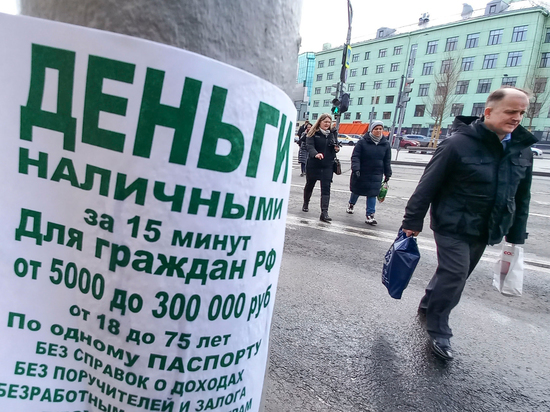The Central Bank has set the severity of debts: the average Russian family owes 140 thousand rubles
[ad_1]

The median salary in the country is several times less than the median debt
The median amount of debts of Russian households for all types of debt is 140 thousand rubles, the Central Bank found out by means of a poll. The indicator is alarming and at the same time extremely ambiguous. On the one hand, the general problem of the debt burden of citizens looks extremely acute, and on the other hand, there are several circumstances that give hope for some mitigation in the foreseeable future.
The median amount, in contrast to the average, means that 50% of respondents have a debt above the value of 140 thousand, and 50% – below. After conducting a study in April-August 2022 in 38 settlements of the Russian Federation, the regulator got the following picture. In total, 23.1% of the surveyed households have debts to various kinds of creditors, while the largest share – 10.5% – is burdened with consumer loans, with a median debt value of 100 thousand rubles. 5.3% of families have mortgage debts (973.9 thousand rubles), 4% – on car loans (227.6 thousand), 6.4% – on credit cards (30 thousand), 0.6% – on microloans (25 thousand), 4.6% – to private individuals (9 thousand rubles).
Households use an average of 18% of their expenses to pay off debts, but for the poorest segments this figure is 27%. As the first deputy chairman of the Central Bank, Ksenia Yudaeva, noted, “the high debt burden is shifted towards the low-income group.” These are families that live mainly on social benefits and spend money almost exclusively on food and housing and communal services. They have no savings, which means there is no financial airbag.
The figures and conclusions from the Central Bank fit well with the latest data from the Scoring Bureau, according to which the share of borrowers with two or more loans in December 2022 for the first time exceeded half (50.3%) of the total number of debtors.
“Certainly, 140,000 is an impressive amount,” says Mikhail Belyaev, Candidate of Economic Sciences, financial analyst. – The main contribution to this indicator was made by mortgage lenders and debtors on car loans. There are many who borrowed money for travel, travel and preparation of wedding celebrations. It is bad that the median debt of Russians is much higher than the average and median wages in the country, which today amount to 56,000 and 36,000 rubles, respectively.”
There are actually two reasons for this. First, the factor of social and financial irresponsibility cannot be discounted: a huge mass of people in the country have not yet learned to correlate their consumer appetites with real earnings. In the second case, it is not about the inability or unwillingness to competently manage money, but about the absence or critical shortage of money itself. Moreover, this story concerns precisely poor Russians, who sometimes have nothing to buy sausages, not like a new refrigerator or a car. Of course, Belyaev argues, the problem can be solved in a purely administrative way, in a bureaucratic way, by tightening the rules for issuing loans for banks. But it will be much better if the state finally takes up the development of the real sector of the economy, creates jobs with decent wages, and does not limit itself to cosmetic manipulations such as the recent increase in the minimum wage.
Meanwhile, the situation with consumer loans allows us to hope for some “light at the end of the tunnel.” According to the Scoring Bureau, in February of this year, they were issued in monetary terms 431.8 billion rubles, which is 12.3% less than in February 2022. During the year, the average consumer loan bill also decreased – to 183 thousand rubles (from 240 thousand). It is clear that in conditions of high uncertainty – economic and geopolitical – it is more difficult for citizens to plan for the future, and unsecured consumer loans attract people less and less. However, this falling demand is also due to regulatory measures by the Central Bank. As Maxim Osadchiy, head of the analytical department at BKF-Bank, recalls, from the first quarter of 2023, the regulator introduced a new mechanism for all banks with a universal license and microfinance organizations – macroprudential limits (MPL). Above which the lender cannot issue loans of certain types. Another important reason for the cooling of the market is the growth in average interest rates on consumer loans – from 15.4% per annum in the fourth quarter of 2021 to 20.6% in the same quarter of 2022.
[ad_2]
Source link






